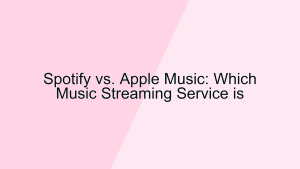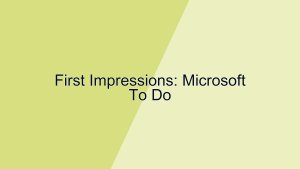In the modern workplace, effective team collaboration tools are essential for productivity and communication. Two of the leading platforms in this space are Slack and Microsoft Teams. Both offer a range of features designed to enhance team collaboration, streamline workflows, and improve communication. This article will compare Slack and Microsoft Teams across various aspects to help you determine which tool is the best fit for your team.
1. User Interface and Design
The user interface and design of a collaboration tool significantly impact its usability and the overall user experience. Let’s examine how Slack and Microsoft Teams approach their interfaces.
- Slack’s Interface: Slack features a clean, intuitive, and user-friendly interface that is easy to navigate. The main workspace is divided into channels, direct messages, and apps, which are accessible from a sidebar. Channels can be organized by teams, projects, or topics, allowing users to keep conversations structured and focused. For example, a marketing team can create separate channels for social media, content creation, and campaigns, making it easier to manage discussions and resources. The customization options, such as themes and notification settings, enable users to tailor the interface to their preferences, enhancing their overall experience.
- Microsoft Teams’ Interface: Microsoft Teams offers a more integrated and comprehensive interface, combining chat, video conferencing, and file collaboration in one platform. The main workspace includes teams, channels, and tabs, which can be customized to suit the team’s workflow. Each team can have multiple channels for different projects or topics, and tabs can be added to include apps, files, and other tools. For instance, a product development team can create channels for design, development, and testing, with tabs for project management tools and shared files. The integration with other Microsoft 365 apps, such as OneNote and SharePoint, further enhances its functionality, making it a powerful tool for collaboration.
2. Communication Features
Effective communication is the cornerstone of any collaboration tool. Both Slack and Microsoft Teams offer a variety of communication features, but they cater to different needs.
- Slack’s Communication Features: Slack is designed primarily as a messaging platform, with a strong focus on real-time communication. It supports direct messages, group messages, and channels, allowing users to communicate in various formats. One of its standout features is the extensive use of integrations and bots, which can automate tasks and provide updates from other apps. For example, a sales team can integrate their CRM with Slack to receive notifications about new leads and updates directly within the platform. Additionally, Slack offers voice and video calling, screen sharing, and the ability to set reminders and pin important messages, making it a versatile communication tool.
- Microsoft Teams’ Communication Features: Microsoft Teams provides a comprehensive suite of communication tools, including chat, video conferencing, and voice calls. Its integration with Microsoft 365 apps allows for seamless collaboration on documents, spreadsheets, and presentations directly within the platform. For instance, a remote team can use Microsoft Teams to conduct virtual meetings, collaborate on a Word document in real-time, and share their screens for presentations. The ability to schedule meetings, record sessions, and integrate with Outlook for calendar management enhances its functionality for both synchronous and asynchronous communication. The built-in collaboration features make Microsoft Teams a robust solution for teams that require a more integrated approach to communication.
3. Collaboration and Productivity
Both Slack and Microsoft Teams are designed to improve team collaboration and productivity, but they offer different approaches and features.
- Slack’s Collaboration Features: Slack excels in integrating with a wide range of third-party apps and services, making it a flexible tool for various workflows. Users can connect Slack with project management tools like Trello, Asana, and Jira, as well as productivity apps like Google Drive and Dropbox. For example, a project manager can create Trello cards directly from Slack messages and receive updates on task progress. Slack also supports file sharing, collaborative document editing through integrations, and the ability to create and manage custom workflows using Slack’s Workflow Builder. These features enable teams to streamline their processes and enhance productivity.
- Microsoft Teams’ Collaboration Features: Microsoft Teams offers deep integration with Microsoft 365 apps, providing a seamless collaboration experience. Users can co-author documents in Word, collaborate on spreadsheets in Excel, and create presentations in PowerPoint without leaving the platform. For instance, a finance team can work together on an Excel budget spreadsheet in real-time, with changes automatically saved and synced. The integration with SharePoint allows for easy file management and sharing, while OneNote integration provides a space for meeting notes and brainstorming sessions. The ability to create and manage tasks through Microsoft Planner and To Do enhances project management capabilities, making Microsoft Teams a comprehensive tool for collaboration and productivity.
4. Security and Compliance
Security and compliance are critical considerations for any collaboration tool, especially for businesses handling sensitive information. Both Slack and Microsoft Teams offer robust security features, but there are differences in their approaches.
- Slack’s Security Features: Slack provides enterprise-grade security with features such as data encryption in transit and at rest, two-factor authentication (2FA), and single sign-on (SSO) support. It also offers compliance certifications, including SOC 2, SOC 3, ISO/IEC 27001, and GDPR compliance. For example, a healthcare organization can use Slack with confidence, knowing that their patient data is protected and the platform meets regulatory requirements. Additionally, Slack offers enterprise mobility management (EMM) to secure mobile access and advanced administrative controls to manage user permissions and data access. These features ensure that Slack is a secure and compliant choice for businesses of all sizes.
- Microsoft Teams’ Security Features: Microsoft Teams leverages the security and compliance features of the Microsoft 365 ecosystem, providing robust protection for user data. It offers end-to-end encryption, multi-factor authentication (MFA), and advanced threat protection. For instance, a financial services firm can use Microsoft Teams to ensure that their communications and data are secure from cyber threats. Microsoft Teams is also compliant with various industry standards, including HIPAA, GDPR, and FedRAMP. The integration with Microsoft’s security tools, such as Azure Active Directory and Microsoft Defender, provides additional layers of security and compliance management. These features make Microsoft Teams a trusted platform for organizations with stringent security and compliance needs.
5. Pricing and Subscription Plans
The cost of a collaboration tool can be a deciding factor, especially for small businesses and startups. Both Slack and Microsoft Teams offer different pricing models to cater to various needs.
- Slack’s Pricing: Slack offers a freemium model, with a free tier that includes basic features such as limited message history, integrations, and 1:1 voice and video calls. The paid plans, including Slack Standard and Slack Plus, offer additional features such as unlimited message history, more integrations, and advanced admin controls. For example, a small business can start with the free version of Slack to manage their team’s communication and upgrade to the Standard plan as their needs grow. The Enterprise Grid plan is designed for large organizations, offering enhanced security, compliance, and support. The flexible pricing model allows businesses to choose a plan that fits their budget and requirements.
- Microsoft Teams’ Pricing: Microsoft Teams is available as part of the Microsoft 365 subscription, with different plans catering to various business sizes and needs. The free version of Microsoft Teams includes unlimited chat, video calls, and 2GB of file storage per user. The paid plans, such as Microsoft 365 Business Basic, Standard, and Premium, offer additional features such as more storage, advanced security, and integration with other Microsoft 365 apps. For instance, a mid-sized company can choose the Business Standard plan to benefit from enhanced collaboration tools and increased storage. The inclusion of Microsoft Teams in the broader Microsoft 365 subscription provides additional value for businesses already using other Microsoft services.
Conclusion
Choosing between Slack and Microsoft Teams depends on your team’s specific needs and preferences. Slack offers a user-friendly interface, extensive integrations, and flexibility, making it ideal for teams that prioritize real-time communication and customization. On the other hand, Microsoft Teams provides a more integrated and comprehensive solution, with deep integration with Microsoft 365 apps, advanced security features, and robust collaboration tools, making it a great choice for teams that require a more structured and secure environment.
Consider your team’s workflow, the nature of your projects, and the features you prioritize when making your decision. Both Slack and Microsoft Teams offer free versions, so you can try them out and see which one best fits your collaboration needs. Whether you choose Slack or Microsoft Teams, both platforms provide powerful features to help your team stay connected, productive, and secure.












